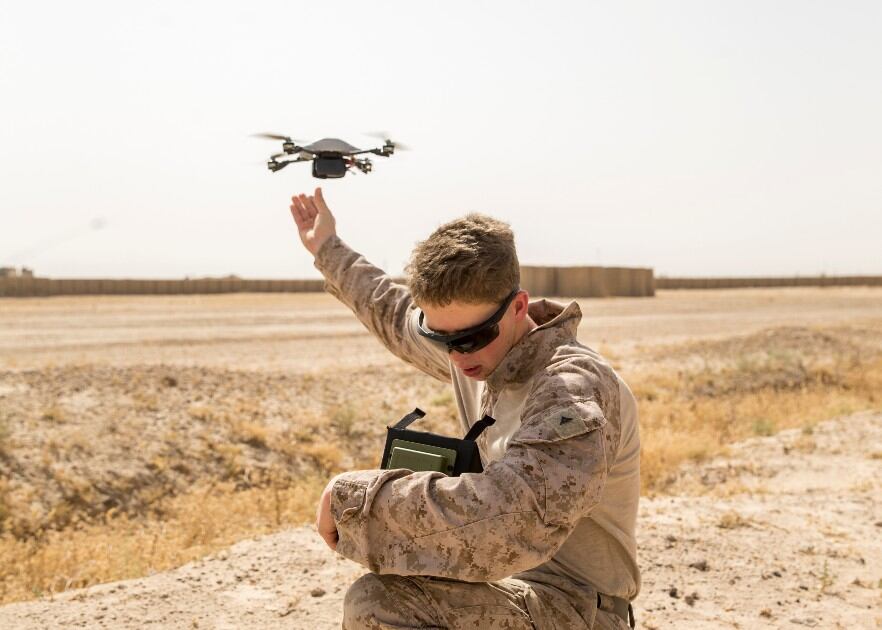The AK-47 was a product of massive centralized and state-controlled industry. The iconic assault rifle, designed by Mikhail Kalashnikov for the USSR, has roots in earlier weapon designs from World War II. Issued to the Soviet army for trials in 1946, it was built simple, rugged and efficient so that it could be used with minimal training. These traits meant the AK-47 met the needs of the USSR, but they also ensured the gun had a second life away from the tight control of a professional military.
The AK-47 is at least as famous, if not more so, for its role fueling insurgencies and violent nonstate actors across the world. Which leads to the central question at the heart of a new report on the global military drone industry: Who will develop the AK-47 version of the drone?
In “Unmanned Ambitions: Security implications of growing proliferation in emerging military drone markets,” study authors Wim Zwijnenburg and Foeke Postma present a survey of known drones produced and sold by emerging makers. That means no United States or Israel or China, and instead an in-depth look at the drone industry of India, Iran, Pakistan, Russia, South Africa, Turkey and Ukraine.
The nations of South America are featured together in one longer profile, and there are shorter profiles on nations ranging from Armenia to Venezuela. Drones are sorted into one of five categories, ranging from VTOL quadcopters to the massive High Altitude Long Endurance craft, though the middle category of “military-grade” drones seems a catch-all for everything bigger than a quadcopter and smaller than a Predator.
Parts of the study’s analysis appear somewhat limited. A section on Ukraine’s drone use highlights action against Crimean separatists, while the actual fighting between Ukrainian forces and separatist forces takes place further east on the mainland, near Donetsk. The study also reports that there has been a shift away from quadcopters to fixed-wing drones for use as low-cost loitering munitions. If there is a shift happening, it’s somewhat gradual. A DJI quadcopter was used to drop bombs at least as recently as late April, though fixed-wing drones have also been spotted on the Donetsk front.
None of the country surveys address the manufacture of commercial drones, which are so far the kind of unpeopled flying machine most immediately turned into weapons.
While drones like the DJI Phantom may match the ubiquity of the AK-47, they certainly don’t match the lethality, making them more akin to the Model-T of drones, or perhaps even the Hilux. What the study is looking for is that seamless pairing of ease of use and lethality, and it’s likely the drone that fills this role doesn’t exist yet.
In a section on drone export controls, the study looks at the ways in which nations may collectively prevent such a drone from being sold broadly. The study itself was funded and published by PAX, a nonprofit with the explicit goal of protecting civilians from violence, reducing armed conflict, and building a just peace.
While a far cry from world peace, nations maintaining high barriers to the export of drones is one way to mitigate who ultimately ends up with armed drones. Instead, the study finds that nations are reducing those barriers, making it easier for smaller states, and ones that would have a harder time passing strict betting, to afford and acquire flying machines. Still, these drones remain the purview of states, priced such that nations can buy them, not insurgent groups.
For there to truly be a drone version of the AK-47, it would need to be priced low enough that it could equip a cash-strapped force, without the traditional revenue streams of a state. Right now, that need is met mostly by improvisation and craftsmanship.
“Armed nonstate actors have only limited capacities to acquire military-grade drone technology from major producers and often modify drones produced by commercial manufacturers, often taking a creative approach to construct a Do-It-Yourself (DIY) drone from whichever scraps, surplus materials and other parts they are able to acquire on open or black markets,” states the study.
“A range of eclectic materials have been found in an abandoned drone workshop of so-called Islamic State, including fuselages and Styrofoam wings; cheap commercially-available quad-copters that were gutted for their batteries and cameras and a gyroscope, usually intended for a domestic market, indicating that this might have been used as a make-shift navigation tool.”
These scratch-built drones, ably documented in the field by Conflict Armament Research, depend far more on commercial supply lines, online retailers and parts smuggled across borders. That supply line, the ability of groups like ISIS to gain access to gyroscopes and motors even when embattled and cut off from traditional trade, is fueling the improvised drones actually observed on battlefields. The problem at present is not an AK-47 of drones, but the continued ability of groups to produce essentially the zip-gun of drones.
This is a small comfort, but it is a comfort nonetheless. If the AK-47 was the ultimate product of mass-production warfare, then there will be no drone that can match it. The companies interested in producing cheap and durable drones have commercial markets to produce for first, and the nations interested in equipping their armed forces with cheap and durable drones have a wholly different understanding of “cheap,” and are unlikely to want to supply proxies with swarms they themselves can control remotely.
Until the production dynamics change, insurgent drones will remain homebrew affairs.
Kelsey Atherton blogs about military technology for C4ISRNET, Fifth Domain, Defense News, and Military Times. He previously wrote for Popular Science, and also created, solicited, and edited content for a group blog on political science fiction and international security.








